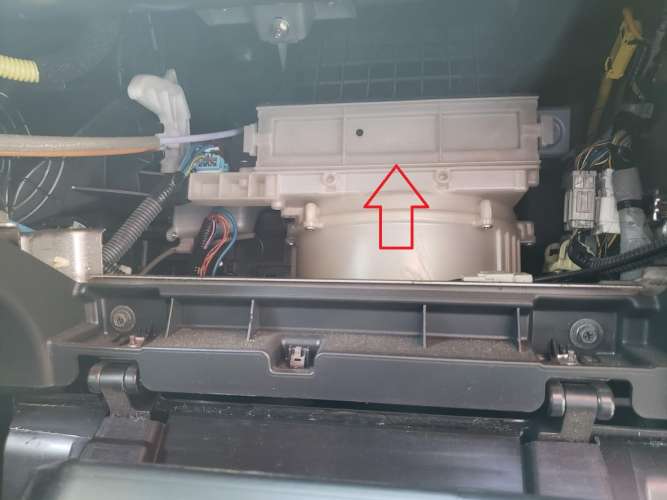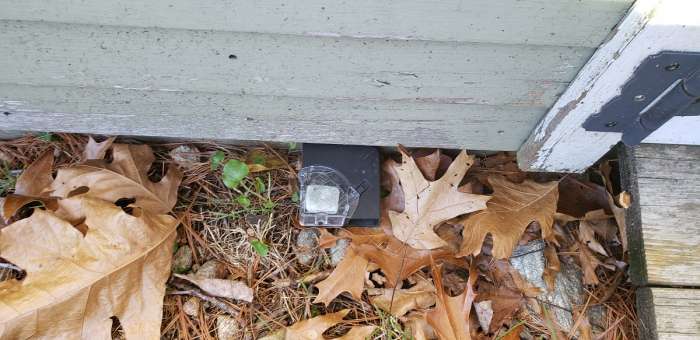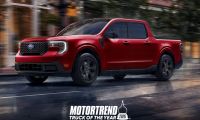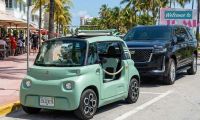Mice, rats, and other rodents love to live in and chew up our cars. The cars offer a great den. Warm, with plenty of materials from which to build a cozy nest. Hard for birds, cats, and other predators to enter into. Unfortunately for us car owners, mice don't just live in the cars we drive. They also chew on wiring, tubing, plastic housings, and a lot of important parts that were not meant to be chewed.
Related Story: Car Talk Helps Bust the Myth That Soy Is Why Rodents Are Eating Your Car’s Wires
How To Know If Mice Are In Your Vehicle
Preventing rodent damage is the best path to take. To do that, you need to know if they are starting to call your ride their home. Here are a few ways to actively search for signs of rodent intrusion into your vehicle.
Check Under the Hood
Pop your hood and look around the engine bay with a flashlight to see if there are any acorns, pinecone bits, or nesting materials visible. If there are, mice are starting to shelter in your vehicle. Normally, these things won’t find their way onto any engine surface or in any of the many nooks and crannies under your hood. Leaves around the intake vents at the base of the windshield are the exception and not a cause for concern. Just remove any you find.
Up under your hood is a fiberglass textile mat. It is there for a number of good reasons, none of which is to be a mouse den. However, Mice love that spot. It remains warm long after you shut off your car. It is the ideal location to be free from any predators, and the fiberglass textile is ideal for mice bedding. Look for any holes and tap that mat to listen for acorns and debris up inside of it.
When you have your car in for service, ask your mechanic to pull and inspect the engine air cleaner element, a.k.a. The air filter. Mice love to go into your air intake, and the filter is a perfect spot to nest. Some mice eat up the filter.

Look For Signs Of Mice Inside Your Vehicle Cabin
Look inside the trunk, glovebox, and under the seats for any acorns or pinecones. Mice have little difficulty gaining entrance if they want to be in the cabin. One very popular spot is the cabin air filter located inside your glove box. It's easy to inspect and replace your car's cabin air filter. Here's how to do it. They cost about $15 on Amazon, so why not change and inspect it annually to ensure it has not turned into a mouse house?

What To Do If You Discover Signs Of Rodents In and Around Your Vehicle
If you find that your car has been invaded, you can take action to prevent further damage. If the car is running well and has no indications of chewed wires or hoses, you can relax. Go to your local hardware store and ask for some Decon or other brand of mouse poison. Follow the directions. You can put Deocn into your trunk or under the vehicle where you park. Look for a corner for the decon. Mice follow walls then they slurry about. If you are concerned about using poison, you can instead use mechanical traps. Bait them with peanut butter. You can also construct your own bucket trap following instructions from videos on Youtube. We suggest not using sticky paper. It is unnecessarily cruel and can get on you, your pets or your children. Not fun stuff.
If you do see sings of damage, ask your mechanic for help. If the damage is severe, your insurance company will help if you carry comprehensive insurance.
If you have any other suggestions on how to deal with mice and rodents threatening your vehicle, please feel free to post them in the comments below.
Image of mouse damage under a car hood by John Goreham. Image of Decon in use by John Goreham.
John Goreham is a long-time New England Motor Press Association member and recovering engineer. John's interest in EVs goes back to 1990 when he designed the thermal control system for an EV battery as part of an academic team. After earning his mechanical engineering degree, John completed a marketing program at Northeastern University and worked with automotive component manufacturers, in the semiconductor industry, and in biotech. In addition to Torque News, John's work has appeared in print in dozens of American news outlets and he provides reviews to many vehicle shopping sites. You can follow John on TikTok @ToknCars, on Twitter, and view his credentials at Linkedin
Re-Publication. If you wish to re-use this content, please contact Torque News for terms and conditions.












Comments
I heard peppermint oil will
Permalink
I heard peppermint oil will keep them away.
No rodents here.
Our mechanic recommended and
Permalink
Our mechanic recommended and installed MouseBlocker units under our hood after we had damage. Been protected ever since. We do not like using poison as the ripple effect it has on also killing wildlife that feed on small rodents.